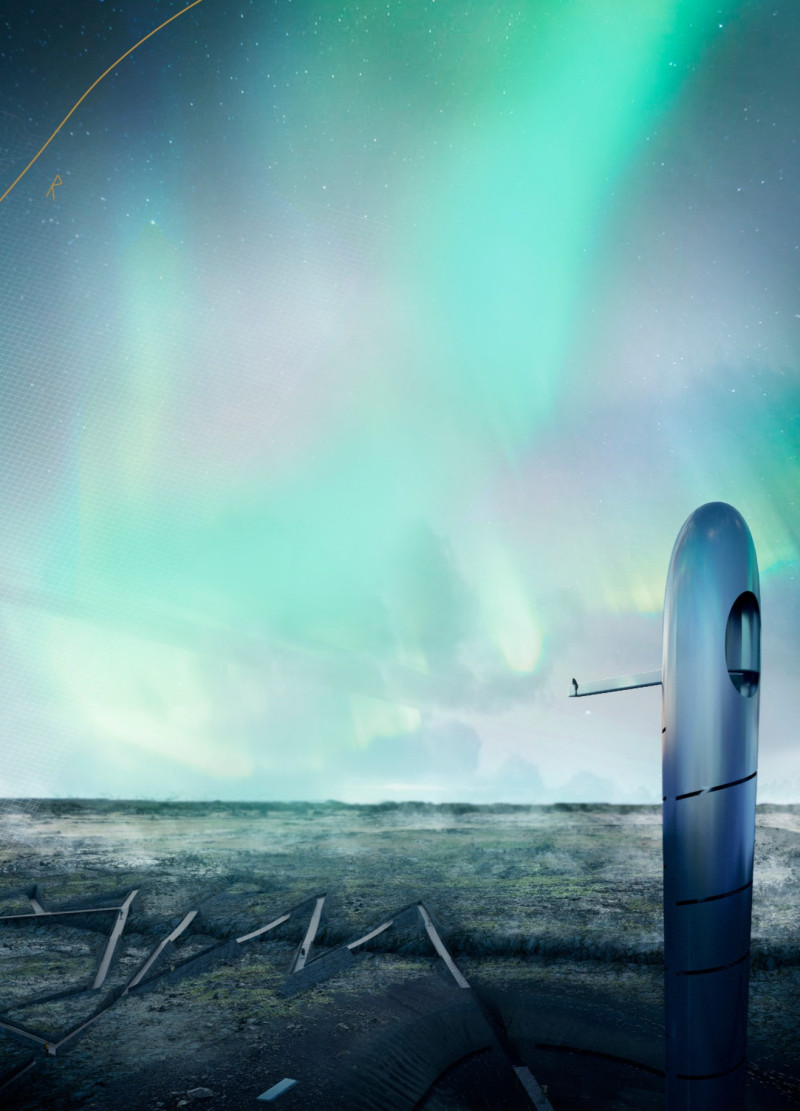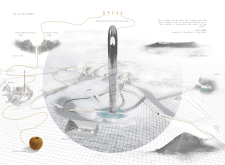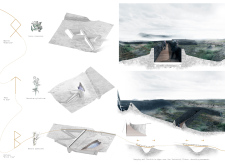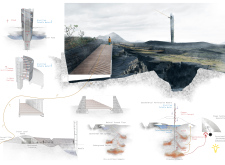5 key facts about this project
The design is situated in Iceland and is built around the unique natural features of the landscape. It explores the relationship between the North American and Eurasian tectonic plates, creating a setting that connects visitors to the geological history of the region. The concept emphasizes interaction with the natural environment and incorporates elements of Icelandic cultural heritage, particularly through the use of runes. The intent is to deepen the understanding of the space and its significance.
Conceptual Framework
The central feature is a needle structure that rises prominently in the landscape. This vertical form is both a physical landmark and a symbol of connection. As it penetrates the ground, it creates an interior void that invites exploration, engaging visitors in the geological rhythms of the area. A main thread emerges from the earth, guiding people toward an observation platform. This design facilitates movement through the landscape, encouraging exploration.
Cultural Integration
The use of Icelandic runes adds a layer of cultural significance to the project. Trails throughout the site represent these ancient symbols, transforming the experience of navigation into a meaningful journey. Each step taken on these paths deepens the connection between visitors and the cultural history of Iceland. The architectural elements embody this cultural narrative, allowing people to engage with the significance of the land.
Environmental Considerations
Geothermal characteristics play an important role in shaping the design. Proposed features such as hot springs and an underground geyser reflect a commitment to utilizing natural resources effectively. The arrangement of functional areas, including water ponds and pathways, is designed to enhance visitor interaction with the environment. This layout ensures that people can appreciate and benefit from the geothermal aspects of the site.
Natural Integration
The selection of plants such as Opalan, Tiwaz, and Berkana highlights the project’s focus on ecological diversity. This approach connects architecture with the local environment, enhancing the existing landscape's value. Moreover, hanging and flexible bridges are included to cross over tectonic plates, responding to the movements of the earth while providing an engaging experience for those who visit.
The design emphasizes a continuous interaction with the landscape, where human and natural elements coexist. This thoughtful relationship creates a space that is functional, culturally rich, and attuned to its environment.






















































